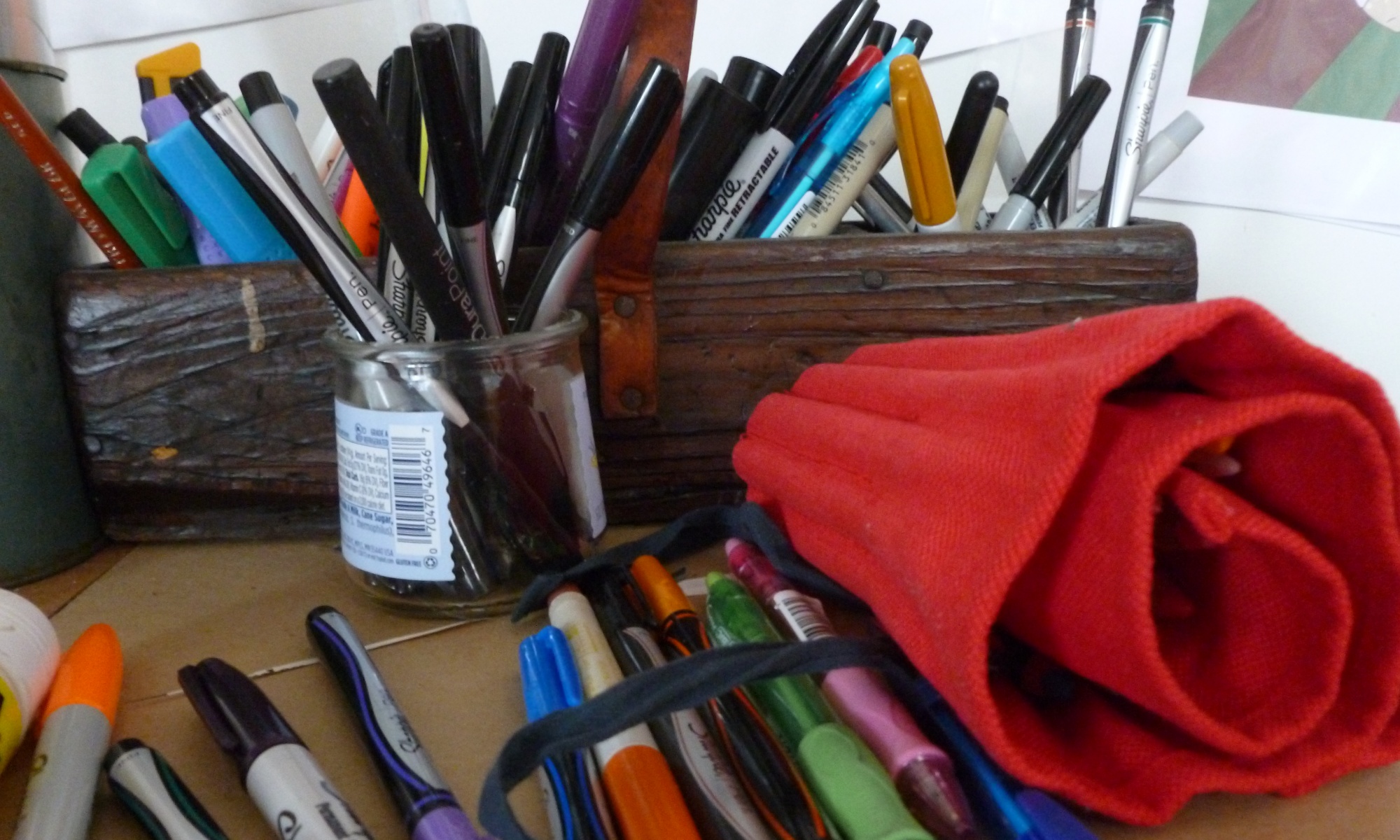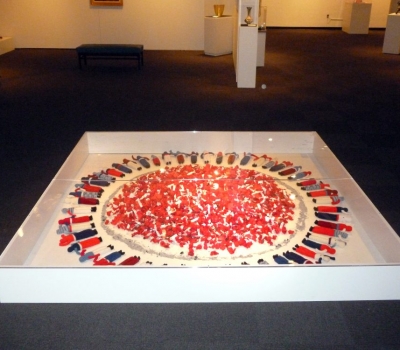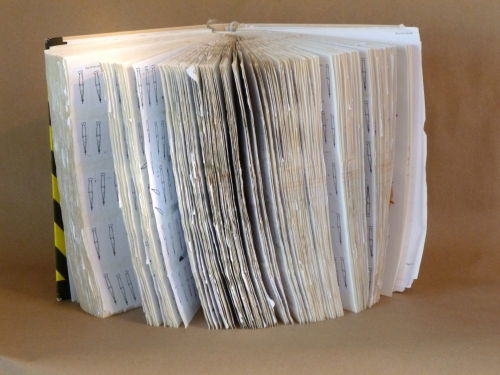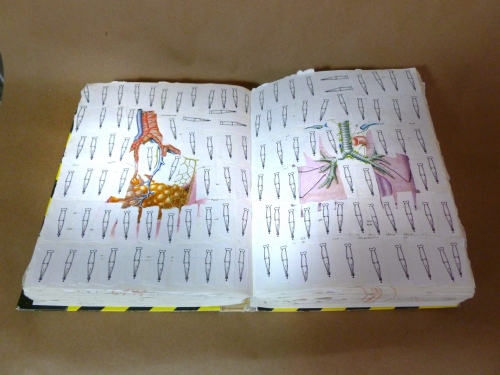Casualties of War
In Flanders fields the poppies blow
Between the crosses, row on row,
That mark our place; and in the sky
The larks, still bravely singing, fly
Scarce heard amid the guns below.

We are the Dead. Short days ago
We lived, felt dawn, saw sunset glow,
Loved and were loved, and now we lie
In Flanders fields.*
*First two stanzas, “In Flanders Fields,” by John McCrae, May 1915
This piece is a response to the hideous consequences of over ten years of combat and conflict in the wars in Iraq and Afghanistan. Many Americans have little or no direct connection with the men and women of the armed forces who serve willingly and bravely, and I am one of them. But my heart could not let go of feelings for the departed soldiers and their families. I began making yarn dolls as a response to the death announcements on PBS News Hour, not knowing what form the final result would take. It resolved itself into a circular floor piece consisting of 50 crocheted figures, one for each state, to represent the almost 4,804** Iraq War casualties. Each is different, but each sports our colors and each wears a purple heart.
In the center is an ever-growing mound of paper poppies, one for each of the 3,300** Afghanistan War casualties. The volume speaks silent witness to the number of the dead.
Thank you to my team of supporters: Judi, Ros, Donna, Bill, Lydia and Eve who made poppies by hand with me in order to meet the installation deadline.
**CNN stats as of May 7, 2013
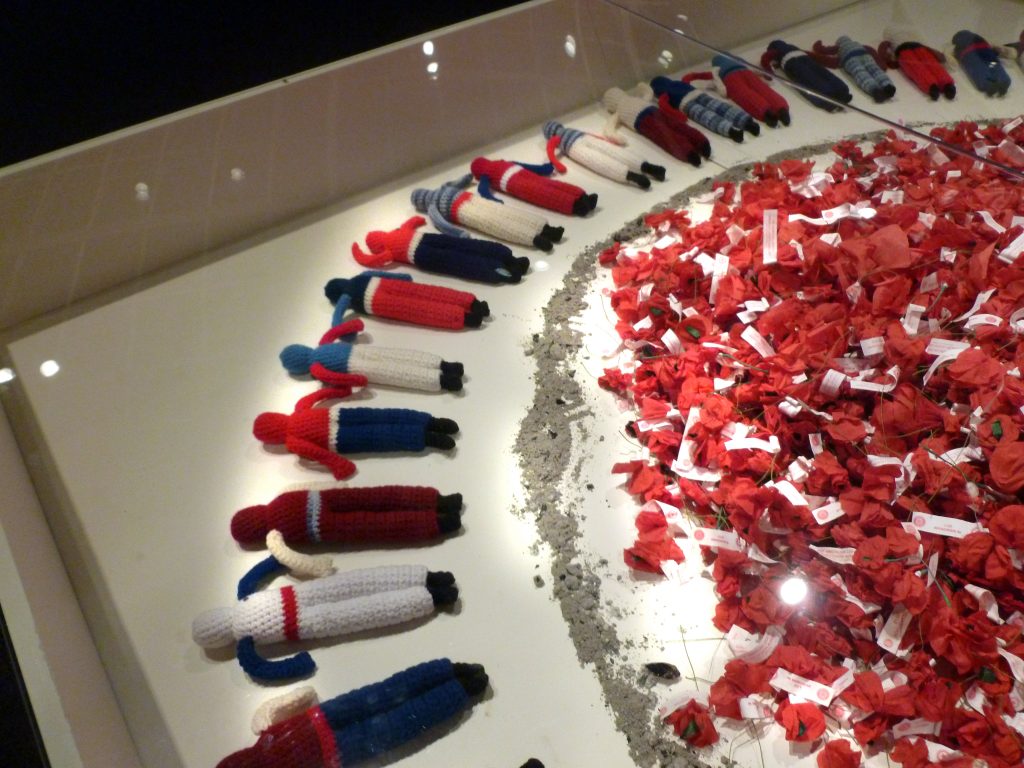
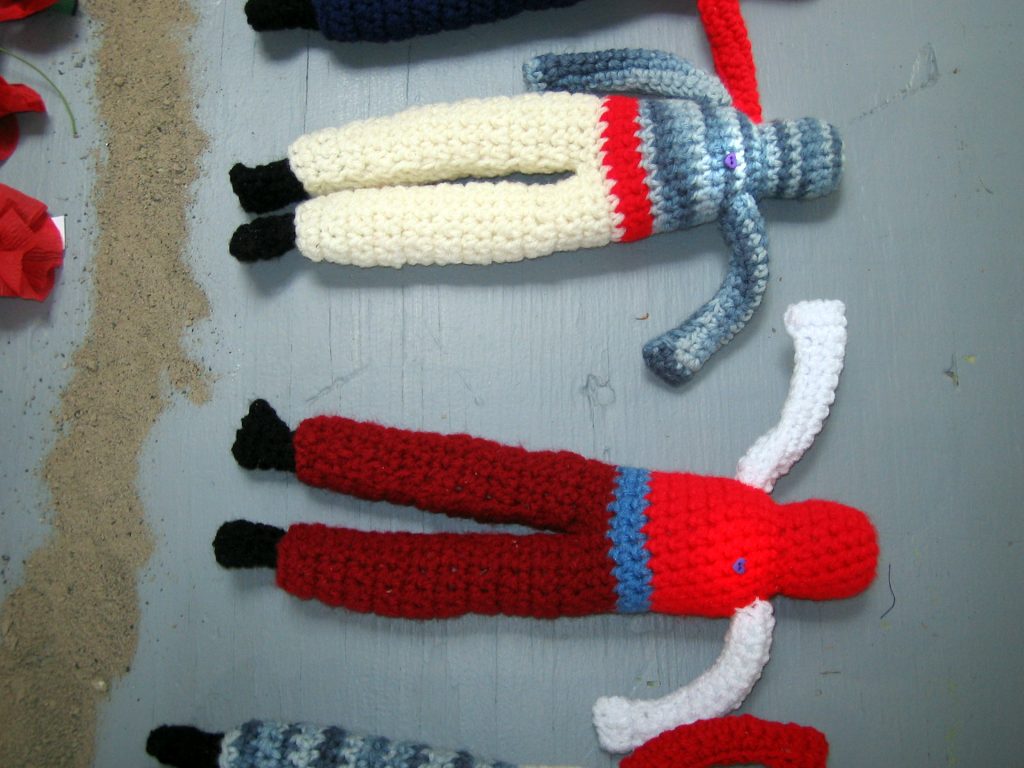
The Wounded
Don’t forget that for every fighter wounded, he or she came home to a family of two or more civilians upon whose care they depend. So out of the tens of thousands of returning soldiers there are many family members who are also living with the consequences of the wounds received by their loved ones. This piece asks us not to forget their sacrifice also.
To get a visual idea of the massive numbers, this altered text book of 810 pages contains 50 copies per page of crutches. That’s 40,500 wounded warriors represented per book. The book now weighs 12 pounds! In these enduring and unending freedom operations, according to the DOD there have been more than 52,000 wounded warriors. Double, triple or quadruple the numbers of civilians affected, the sheer volume begs meaning.
